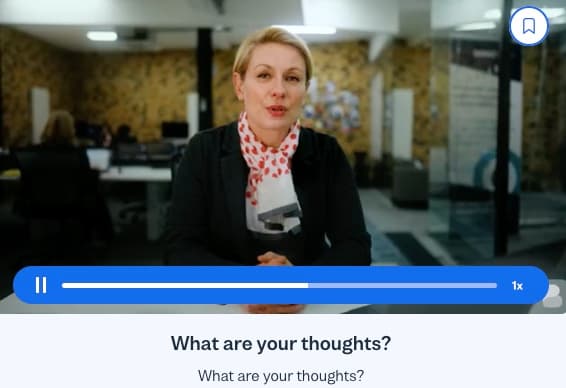I want to learn...
You know learning a language as an adult isn’t easy. Some things just don’t click no matter how much time you spend on them. And fitting in time to study and practice isn’t easy. Work, family, and friends keep you busy enough as it is. Learning a language from an earlier age is much easier. Bilingual education has many benefits for young people.
Let’s clear something up: There’s no best age to start a new language. There’s no magic number. But the sooner you start, the better. You’re reading this article, so most likely you’re past school age. But if you have young family members, they can take advantage of bilingual education. Read on to learn all about bilingual education and how it can help your young relatives.
What is bilingual education?
Bilingual education is teaching school subjects in two (or more) languages: Native and foreign. It’s not the same as learning a second language because students learn subjects like math and science in the new language. Not just the grammar and vocabulary of the new language.
Instead of going to Spanish class in the 4th period, you go to science class. But the teacher speaks Spanish. No word lists. No grammar drills. You learn the same content you would in an English-speaking science classroom. Only this time you do it in your second (or third) language. Bilingual education needs specialized programs and specialist teachers. It isn’t as simple as I’m making it sound here.
The Bilingual Education Act
But before we get to the benefits of bilingual education, let’s take a look at its history in the USA. In the 1960s, schools in the USA faced a unique challenge. Kids who didn’t speak English at home were having trouble keeping up in English-only classrooms. The Bilingual Education Act (BEA) is legislation that helps these students. And ensure they get quality education not at the expense of their cultural heritage.
The BEA led to greater funding for bilingual education programs. Programs that specialized in helping emergent bilingual students. The original legislation was limited in its funding and definitions of bilingual programs. But further amendments have made the BEA more wide-reaching.
Bilingual Education Programs: 4 Types
The popularity of bilingual schools in the USA has soared over recent years. Parents, educators, and legislators now understand the importance and benefits of bilingual education. For example, in California, recent legislation has made it possible for schools to design and run bilingual programs to meet the needs of their students. This flexibility has led to there now being over 1,300 public schools offering bilingual programs in the state.
Let’s look at the four types of bilingual education programs common in the USA.
1. Immersion programs
Language immersion is one of the best ways to learn a new language. Anybody can do it. You can do it from your home country by surrounding yourself with your new language.
But where immersion really shines is at school. There are a couple of forms it can take. For example, there’s full immersion. This is when native English-speaking kids spend the whole school day learning in a different language. They’re not learning the language though. They’re learning their usual subjects in the new language. Or there is partial immersion. Here the split is closer to 50/50. The students learn academic content in their native language and their new one.
2. Dual language programs
In dual language programs, there’s a mixture of native speakers. For example, half of the class could be from the USA and the other half from France. The teacher is fluent in both languages. The goal of dual language programs is to achieve a 50/50 split between the two languages. Students are encouraged to use their own language.
The 90/10 model is common to help students with their new language. At the start of the course, 90% of the instruction will be in their native language. The rest is in their new language. Gradually this split gets closer to 50/50.
3. Early exit transitional programs
Transitional programs are based on the idea of skills from the native language transitioning to the new language. They’re commonly used to teach immigrant students and get them ready to join mainstream schools.
Early exit programs aim to get students ready for mainstream classes (and 100% new language instruction) as quickly as possible. You can think of it like an intensive language course. They still get instruction in their native language for important subjects like math and science so they don’t fall behind.
4. Late exit transitional programs
Similar to early-exit programs, late-exit programs aim to get students ready to join mainstream classes. But instead of rushing, they’re more of a slow burn. It might start with the 90/10 model in the 1st year. In the 2nd year 80/20 and so on. After several years, students are ready to join classes 100% in their new language.
One benefit is that students have more time to learn in their native language. It’s important for them to also develop those skills. But on the flip side, they get less time in mainstream classes.
Become bilingual with Busuu
Even people who aren’t lucky enough to get a bilingual education can master a new language with Busuu. You get feedback from native speakers, access to free online courses made by language-learning experts, and a community of millions of language learners. All from your mobile device.
What are the benefits of bilingualism?
Any language learning is full of benefits, not just in a bilingual education program. Adults and kids alike benefit from mastering a new language. But (and it’s a big but) the longer you spend as a bilingual, the bigger the benefits.
In terms of bilingualism, earlier is better. The benefits kids gain in bilingual education are stronger and have greater influence than those gained as an adult. Because they learn earlier in life, the benefits have more time to affect kids from bilingual schools.
We can broadly split the benefits into two: cognitive benefits and social benefits. Let’s take a look at some of the big ones.
Cognitive benefits of bilingualism
The science is conclusive — language learning is good for your brain. And the earlier you master a second language, the longer you can reap the benefits. Kids who go through bilingual education get the following benefits for the rest of their lives.
* Bilinguals have better memory
And are less prone to memory issues as they age. Monolinguals on the other hand may have more difficulty remembering things and their memory deteriorates as they age.
* Bilinguals have better attention spans.
All those years of learning and managing two (or more) languages are great for concentration and focus. Bilinguals can focus better and for longer than monolinguals.
* Bilinguals have a lower risk of dementia.
Being bilingual can delay dementia by up to four years. This is because bilinguals tend to have more neural reserves (for all the non-neuroscientists out there, that means resilience).
* Bilinguals have improved problem-solving skills.
Speaking more than one language is associated with stronger white matter (white matter is important for other things like decision-making, mood, balance, and walking too).
I want to point out that these benefits aren’t all for young people. It doesn’t matter how old you are. You can learn a new language and get cognitive benefits from it. The only difference is that people who speak more than one language for a long time period (generally people who start learning as kids), get greater benefits.
Social benefits of bilingualism
The cognitive effects of learning a second language as a child are huge. But so are the social benefits. For example, because bilingual children are good at seeing things from other people’s points of view, they have communicative advantages. Other research shows that bilinguals have greater social flexibility. This means they’re better at reading social cues and can adapt to different social situations more easily than monolinguals.
Learning a language is about more than just vocabulary and grammar
Sure, communicating with people from different cultures and countries is awesome. But that’s not the only benefit of being bilingual. When you learn another language, you get a range of cognitive and social benefits. Bilingual schools and programs give young people access to these benefits from a young age. Fortunately, educators, parents, and legislators see the importance of bilingual education. And the number
AUTHOR

Barney Meekin
Newlanguages


